Gewürztraminer wine, originating from the Alsace region of France, is a unique and aromatic white wine that offers distinct flavors and characteristics that set it apart from other varieties. Produced from the pink-skinned Gewürztraminer grape, this wine is known for its sweet, full-bodied nature, and low acidity, making it an intriguing option for those looking to expand their palate.
While Gewürztraminer wine may not be as popular as other white wines such as Chardonnay or Pinot Grigio, its intensely sweet aroma and wide range of styles, from dry to medium-dry, provide a captivating experience for wine enthusiasts.
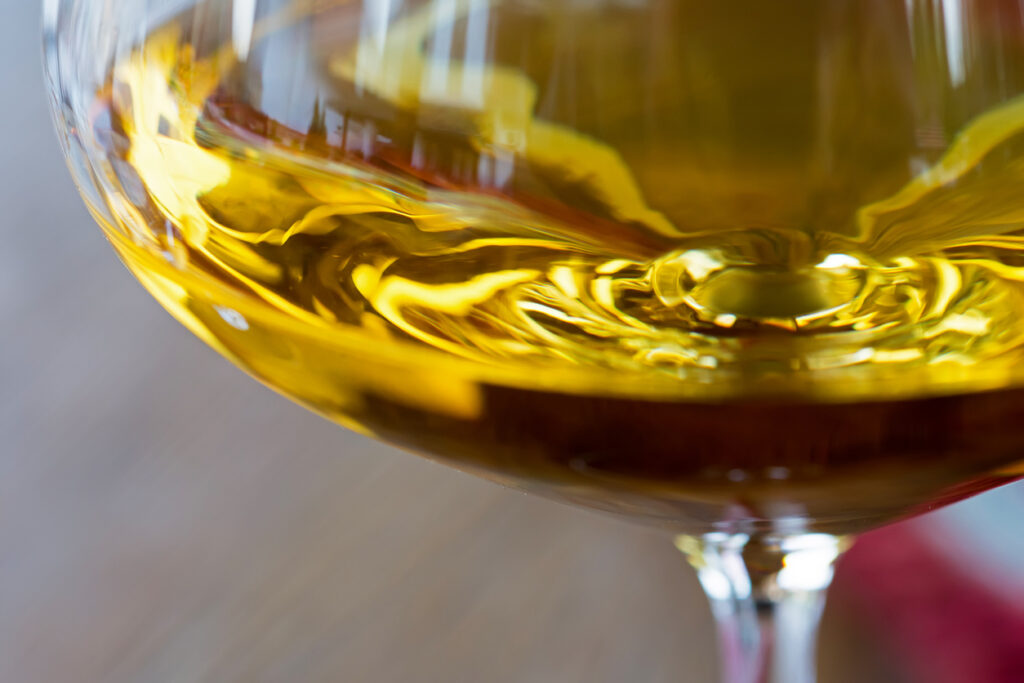
The complex nose of this white wine includes notes of flowers, lychee fruit, perfume, honey, and spice, making it a truly delightful sensory experience.
Despite its relatively lesser-known status and limited food pairing options, Gewürztraminer wine taste provides a unique and memorable experience for those willing to explore its distinctive qualities.
With its overtly aromatic and sweet nature, it is an enchanting wine variety that is sure to leave a lasting impression on those who take the time to savor its unforgettable personality.
History and Origin of Gewürztraminer
Traminer Grape
The history of Gewürztraminer wine begins with the Traminer grape, an ancient grape variety that predates the Gewürztraminer grape. This naturally sweet grape originates from the small town of Tramin in northern Italy. The Traminer grape has been recorded there since around 1000 AD.

Transition to Gewurztraminer
Over time, the Traminer grape underwent a mutation, giving rise to the more aromatic Gewürztraminer grape. The term “gewürz” in German means “spice,” which is a nod to the grape’s distinct spicy characteristics. This mutation is believed to have occurred as the grape spread down the Rhine to Alsace, on France’s border with Germany, via the Palatinate region.
Regions of Production
Although the Gewürztraminer grape finds its origin in Alsace, France, it has been cultivated in several regions around the world. Some of these regions where Gewürztraminer wine is produced include:
- France: Alsace remains the primary region for Gewürztraminer production, where it enjoys a warm and dry climate. The combination of climate and the soil of grand cru vineyards, the terroir, emphasizes the characteristics of this grape. It`s the perfect place for a wine enthusiast to enjoy the Gewürztraminer taste in its varieties
- Germany: Gewürztraminer is grown in various regions across Germany.
- Italy: Northern Italy, particularly Alto Adige, is home to Gewürztraminer vineyards.
- Austria: Austrian wineries also produce Gewürztraminer wines.
- United States: Gewürztraminer grape is cultivated in California, Oregon, Washington State, and New York.
- Australia and New Zealand: Gewürztraminer vineyards can be found in both Australia and New Zealand.
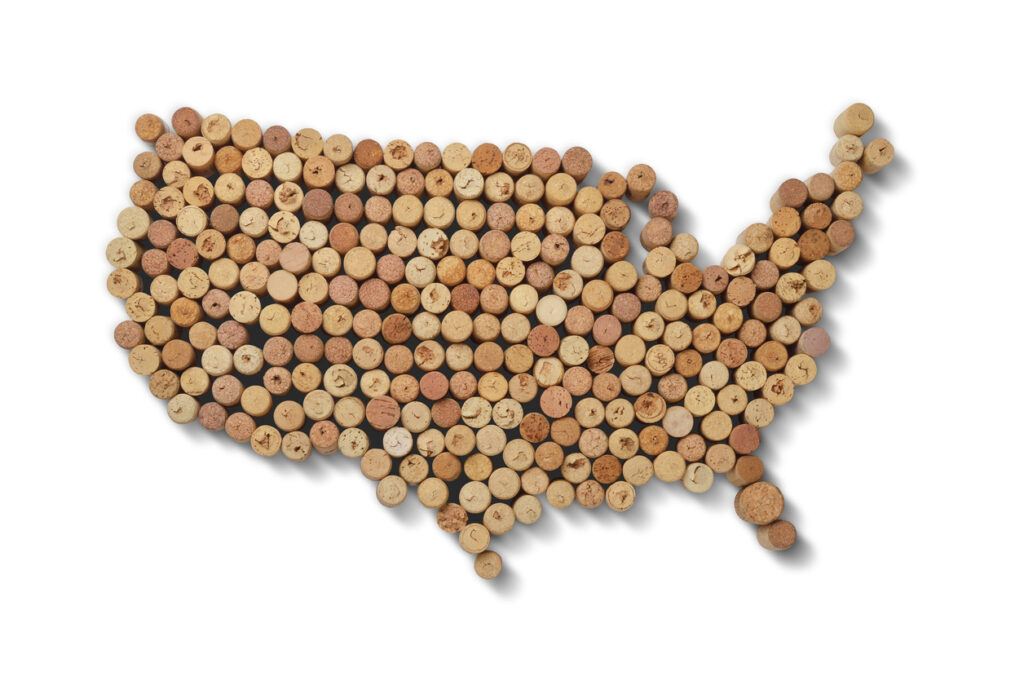
In each of these regions, the unique climate and terroir contribute to the distinct flavors and characteristics of the Gewürztraminer white wines produced there.
Characteristics of Gewürztraminer Wine
Gewürztraminer is a highly aromatic and distinctive wine, often celebrated for its sweet and flavorful characteristics. This section will explore the appearance, aroma and flavor profile, and mouthfeel of Gewürztraminer wine.
Appearance
Gewürztraminer wine is typically a white wine, although the grapes used have dark pink skins. The wine’s color can range from pale straw to a more golden hue, depending on the climate and soil in which the grapes were grown.
Aroma and Flavor Profile
Gewürztraminer is famous for its highly aromatic nature, with an array of unique scents and flavors. Common wine aromas and wine tastes include:

- Lychee, passion fruit
- Citrus, such as grapefruit and pineapple
- Stone fruits, such as apricot
- Honey
- Rose water and rose petal
- Ginger and other spices, like lemongrass
In addition to these fruity and floral notes, Gewürztraminer can also complement savory dishes with red onion, capsicum, and carrot, due to its distinctive spice characteristics.
Although Gewürztraminer is classified as a sweet wine, there are variations in sweetness, ranging from off-dry to full-bodied dessert wines. It often draws comparisons with Moscato, Riesling, and Muscat due to its fruity flavors and sweetness, but it stands out for its stronger and more striking aromatics.

Winemakers in Alsace started to produce Gewürztramier Alsace Grand Cru AOC wines which are bone dry to focus on the intense floral aromas and to preserve acidity.
Mouthfeel
Gewürztraminer wine is typically full-bodied, with a rich and viscous texture. Its low acidity contributes to its smoothness and makes it more difficult to slurp down, earning it the reputation of being a more ‘adult’ wine compared to the likes of Moscato. The wine’s sweetness gives it a luscious mouthfeel, which makes it a luxurious accompaniment to dessert courses or to be enjoyed as a dessert wine on its own.
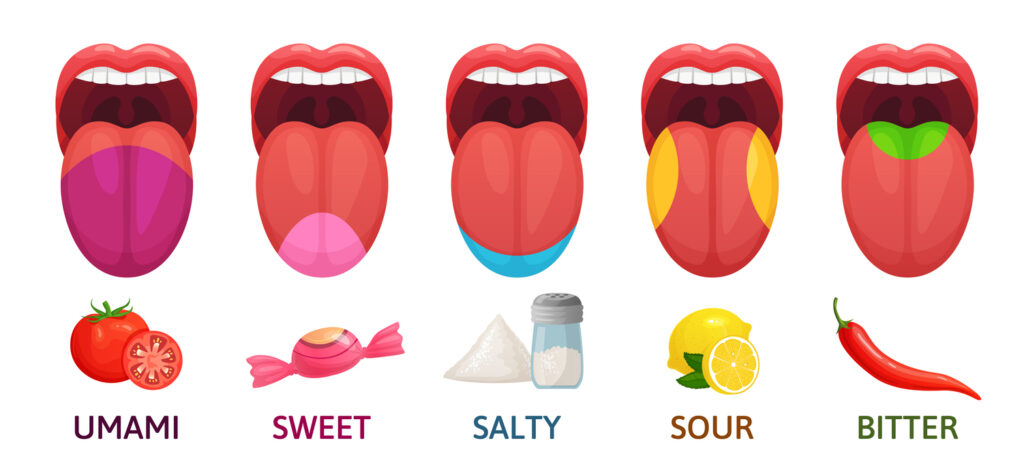
Though Gewürztraminer can be enjoyed young, some wine enthusiasts appreciate the complexity gained through wine aging. The already intense and aromatic wine can develop even more unique flavors and characteristics when aged, adding depth to its profile.
Gewürztraminer Wine Production
Grape Growing and Climate
Gewurztraminer is an aromatic grape variety used in producing medium-to-full-bodied wines with a unique combination of lychee fruit, rose petals, tropical fruit, spice, and white flower notes. Originating from Alsace, France, this grape variety can be found in various wine-producing regions across the world, including Hungary and other parts of Europe.
The grape thrives in warm climates and well-draining soil. However, frost can pose a threat to the growth and development of the Gewurztraminer grape. As one of the four Grand Cru grapes of Alsace, this grape requires specific climatic conditions to achieve its full potential and deliver its characteristic aromatic qualities.

Disease and Challenges
Gewurztraminer grapes are susceptible to various diseases and challenges. Due to their tight grape bunches, they can be prone to fungal infections such as powdery mildew and gray rot. Furthermore, the aromatic grape variety demands attentive vineyard management and specific growing conditions to express its best qualities. Wine producers need to carefully monitor and manage these challenges to ensure the production of exceptional Gewurztraminer wines.
Vinification Techniques
The vinification process of Gewurztraminer wine can vary depending on the desired style, whether it be dry, off-dry, or sweet. A crucial element in producing Gewurztraminer wines is the fermentation process. Fermenting the grape juice at cooler temperatures helps to preserve the delicate aromatics of the grape variety.
Gewurztraminer wines often exhibit a high alcohol content due to the high natural sugar levels found in the grapes. As a result, winemakers may choose to halt fermentation early, retaining some of the grape’s natural sweetness and creating a more balanced wine.
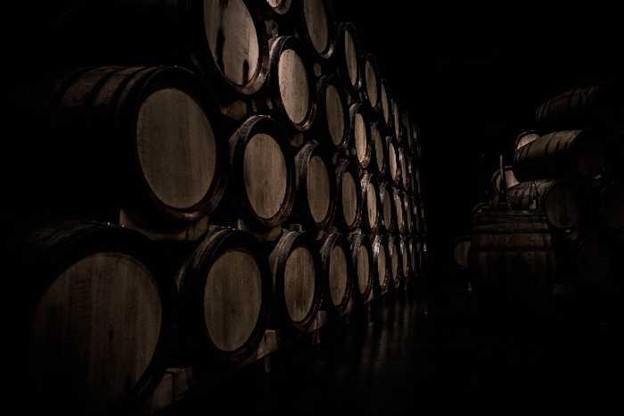
Top-quality Alsatian Gewurztraminer wines, known as “Vendange Tardive,” are produced as age-worthy dessert wines with mineral, spice, and smoke notes. These wines are an excellent representation of the grape variety’s potential when grown and vinified under optimal conditions.
Popular Gewurztraminer Wine Regions
Gewurztraminer is a classic aromatic grape variety that produces intensely fragrant and versatile wines. Though originating in Europe, its popularity has spread across the globe, thriving in various wine regions. Let’s explore some of the top Gewurztraminer wine regions.
Alsace
Alsace, located along the border of France and Germany, is the most prominent and historic region for Gewurztraminer. Famous for its Grand Cru grapes, including Riesling, Muscat, Pinot Blanc, and Gewurztraminer, the region produces highly aromatic and distinctive wines. The terroir of Alsace allows Gewurztraminer grapes to fully express their unique characteristics and complexity.
Germany
As a neighboring country to France, Germany also successfully cultivates Gewurztraminer grapes. Although Riesling is considered Germany’s flagship grape, Gewurztraminer can be found predominantly in the Baden and Pfalz regions. German Gewurztraminers are typically off-dry, with moderate acidity and intense flavors.

Washington State
The cool climate and diverse soil types of Washington State provide ideal growing conditions for the Gewurztraminer grape. As a result, Washington has become an emerging region for this aromatic varietal. Gewurztraminer wines produced in Washington are fruit-forward, exhibiting flavors of lychee, peach, and grapefruit, often accompanied by a hint of spice.
California
While Chardonnay and Cabernet Sauvignon often take the spotlight in California, Gewurztraminer has found its niche in cooler areas such as Mendocino and Monterey Counties. The wines from this region showcase the grape’s inherent aromatic intensity, offering delectable notes of rose, honey, and tropical fruits.
Italy
In Italy, Gewurztraminer is mainly cultivated in the Alto Adige region, where it is known as Traminer Aromatico. The cooler climate allows for the development of bright acidity and pronounced aromas, leading to elegant and well-balanced Italian Gewurztraminers.
Australia
Australia’s diverse terroir and climate offer numerous growing regions for Gewurztraminer, including the Adelaide Hills, Yarra Valley, and Clare Valley. Australian Gewurztraminers are known for their pronounced floral aromas and rich, fruity flavors.

New Zealand
New Zealand’s cool-climate wine regions, such as Marlborough and Central Otago, are ideal for Gewurztraminer production. New Zealand’s Gewurztraminers are lauded for their vibrant acidity and expressive fruit and floral notes, which perfectly complement the country’s cuisine.
How to drink gewürztraminer wine
To fully appreciate this wine, it is important to know how to drink it properly. Here are some tips on how to enjoy Gewürztraminer wine:
Firstly, the temperature of Gewürztraminer should be slightly chilled but not too cold as it can mask the delicate flavors and complex aromas. A good rule of thumb is to serve it at around 10-12°C. This will ensure that the flavors are enhanced and not dulled by the coldness.

Secondly, when drinking Gewürztraminer, pay attention to its distinctive characteristics such as its floral notes and hint of spiciness which make it stand out from other white wines.
In Alsace the wine is traditionally enjoyed as an aperitif. In contrast to this it`s paired to bouillabaise, a fish soup, around Marseille.
Gewurztraminer Wine and Food Pairings
Gewurztraminer wine is a versatile, aromatic classic with unique flavors that can beautifully complement a variety of dishes. With hints of lychee, rose petals, apricot, cinnamon, black pepper, and ginger, it is ideal for pairing with both sweet and savory foods. In this section, we will explore the different food pairings that best enhance the Gewurztraminer wine experience.

Meat and Poultry
Gewurztraminer pairs well with a range of meats and poultry, helping accentuate their flavors. Delicate meats like chicken and duck are excellent choices, as the wine’s fruity essence complements their tender textures. More robust meats like pork and bacon can also benefit from the wine’s sweetness and spice, creating an exquisite balance of flavors.
Seafood
When pairing Gewurztraminer with seafood, opt for options like shrimp or other shellfish. The wine’s tropical fruit notes can enhance the dish’s natural flavors while still providing a distinct contrast to the seafood’s brininess. Additionally, it can counterbalance the richness of dishes containing coconut milk or cream-based sauces. A good pairing would be lobster bisque to emphasize the flavors of the wine and the meal.
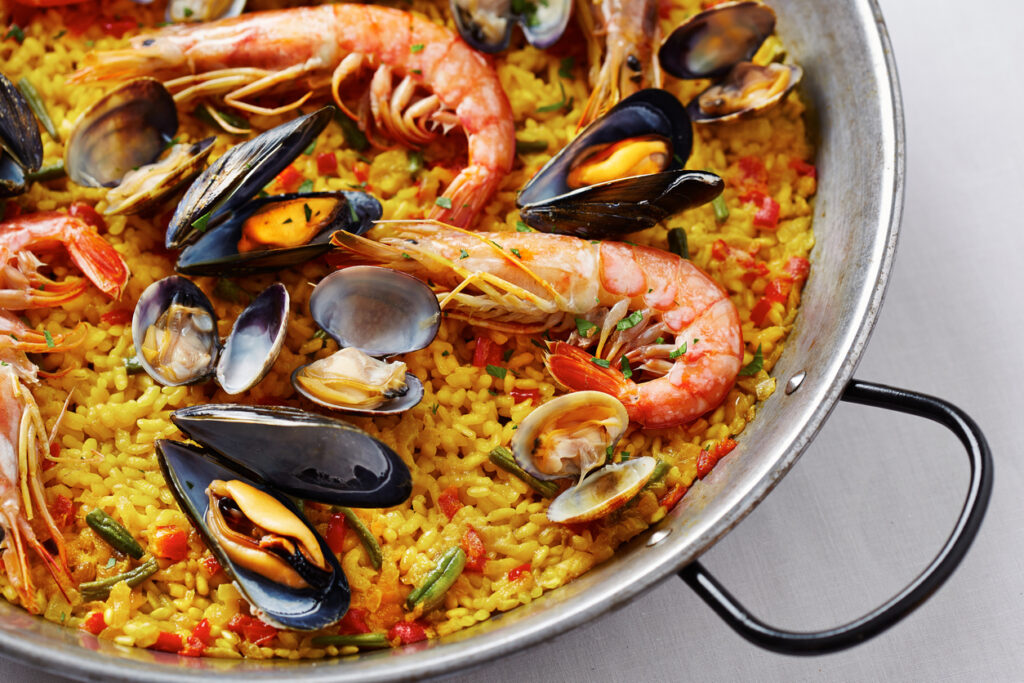
Vegetables
Gewurztraminer’s slightly sweet qualities can effectively balance the flavors of vegetables. For instance, its contrast with artichokes, bell peppers, and carrots can produce a pleasing harmony. It’s less suitable for highly acidic vegetables, as they may overwhelm the wine’s delicate profile.
Cheese
When considering cheese pairings with Gewurztraminer wine, opt for those that share a similar sweetness and nuttiness. Options like Muenster, Gruyère, or a mild blue cheese can provide complementary flavors, resulting in a delightful combination.
Spices and Herbs
Gewurztraminer’s unique flavor profile allows it to flourish alongside various spices and herbs. Cinnamon, cloves, allspice, turmeric, Madras curry, and Sichuan pepper are just a few examples of seasonings that complement the sweet wine’s character. Fresh herbs like shallots, soy sauce, sesame, almond, lime leaf, bay leaf, coriander, cumin, red onion, or even aromatic vegetables like carrots and bell peppers contribute to the overall harmony of flavors.

Global Cuisine
Gewurztraminer wine’s versatility shines through its compatibility with diverse cuisines from around the world. It pairs especially well with Middle Eastern and Moroccan cuisine, as they often incorporate nuts, dried fruits, and roasted meats that enhance the wine’s bouquet. The sweet wine can also complement the Sonoma and Monterey regions’ culinary delights, as well as Asian dishes featuring soy sauce, sesame, and a myriad of spices.

